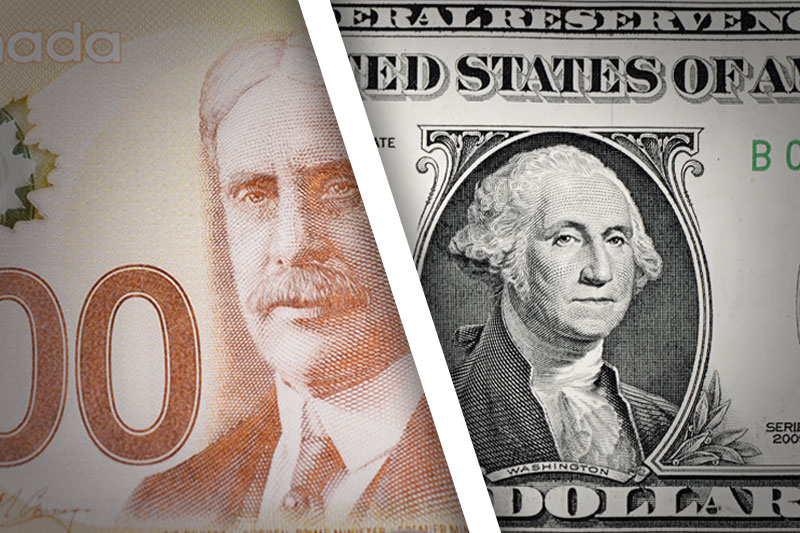Investing.com - The U.S. dollar slipped lower against the Canadian dollar on Monday, after touching a one-week high early in the session as investors remained focused on the outcome of U.S. fiscal cliff negotiations.
USD/CAD hit 0.9882 during early U.S. trade, the pair’s highest since December 10; the pair subsequently consolidated at 0.9847, slipping 0.10%.
The pair was likely to find near-term support at 0.9824, Thursday’s low and a two-month low and resistance at 0.9887, Thursday’s high.
The dollar remained under pressure after the Federal Reserve announced new easing measures last week and said interest rates would remain close to zero as long as inflation forecasts remain near the bank’s 2% target and until the U.S. unemployment rate declines to 6.5% or less.
But demand for the greenback continued to be underpinned amid concerns over the U.S. fiscal cliff, approximately USD600 billion of automatic tax hikes and spending cuts due to take effect on January 1 which investors’ fears could derail the U.S. recovery, if lawmakers cannot reach an agreement.
The greenback showed little reaction after a report showed that the Empire State business conditions index declined to minus 8.1 in December from a reading of minus 5.2 the previous month, compared to expectations for a reading of minus 1.
The loonie, as the Canadian dollar is also known, was slightly higher against the euro, with EUR/CAD slipping 0.14% to 1.2954.
In the euro zone, European Central Bank President Mario Draghi was to appear before the European Parliament’s Committee on Economic and Monetary Affairs to discuss the economy.
USD/CAD hit 0.9882 during early U.S. trade, the pair’s highest since December 10; the pair subsequently consolidated at 0.9847, slipping 0.10%.
The pair was likely to find near-term support at 0.9824, Thursday’s low and a two-month low and resistance at 0.9887, Thursday’s high.
The dollar remained under pressure after the Federal Reserve announced new easing measures last week and said interest rates would remain close to zero as long as inflation forecasts remain near the bank’s 2% target and until the U.S. unemployment rate declines to 6.5% or less.
But demand for the greenback continued to be underpinned amid concerns over the U.S. fiscal cliff, approximately USD600 billion of automatic tax hikes and spending cuts due to take effect on January 1 which investors’ fears could derail the U.S. recovery, if lawmakers cannot reach an agreement.
The greenback showed little reaction after a report showed that the Empire State business conditions index declined to minus 8.1 in December from a reading of minus 5.2 the previous month, compared to expectations for a reading of minus 1.
The loonie, as the Canadian dollar is also known, was slightly higher against the euro, with EUR/CAD slipping 0.14% to 1.2954.
In the euro zone, European Central Bank President Mario Draghi was to appear before the European Parliament’s Committee on Economic and Monetary Affairs to discuss the economy.
